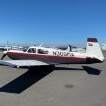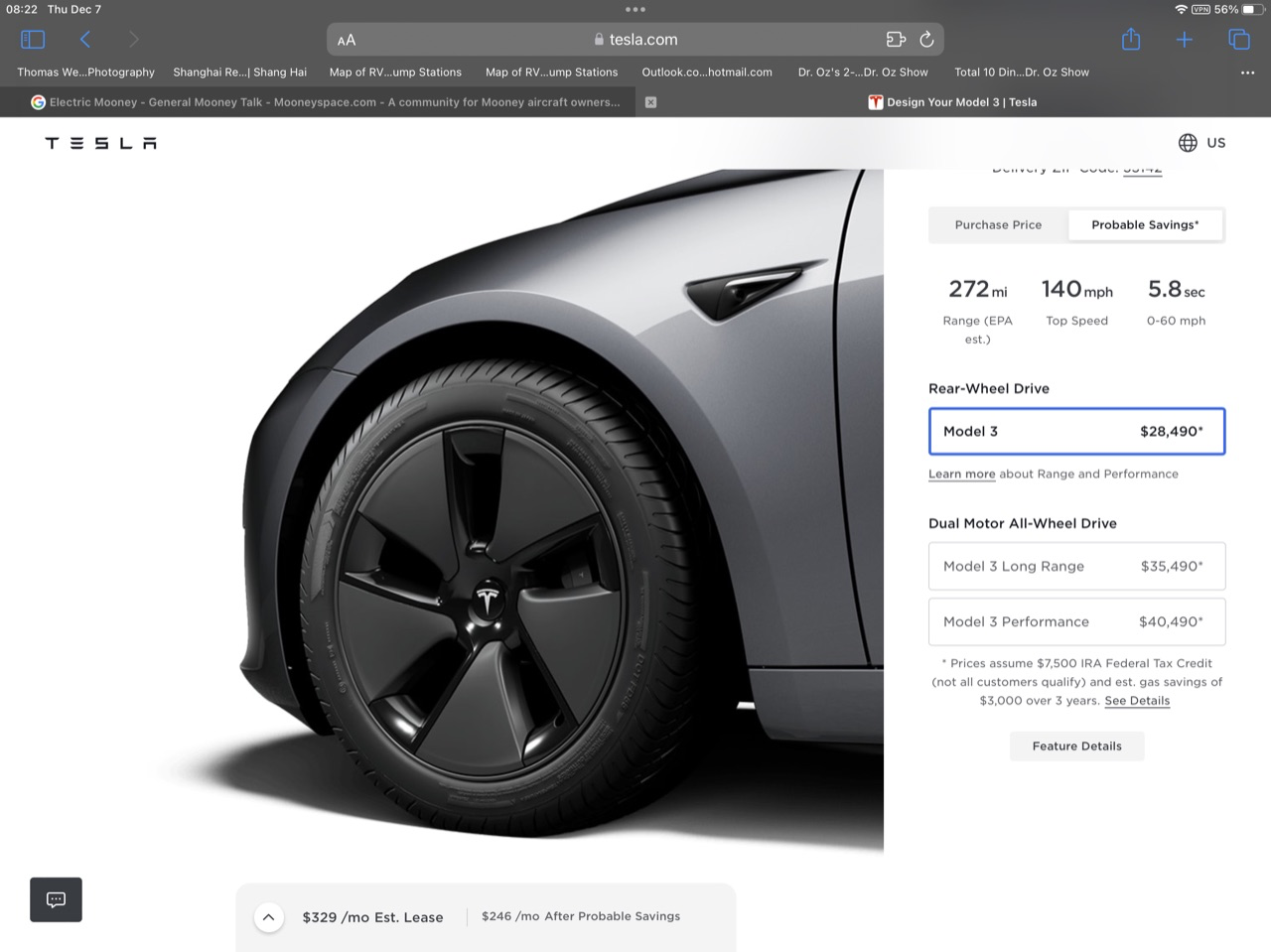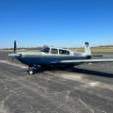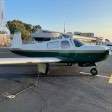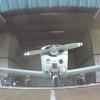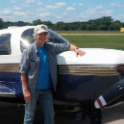Leaderboard
Popular Content
Showing content with the highest reputation on 12/07/2023 in all areas
-
I’ve known Monroe McDonald since the 1980’s as a ham operator I used to talk to every day on the way to and from work. I recognized his distinctive voice on the LiveATC recording. I flew in the BD-4 he built way back then and kept at a hangar in Addison in the days when you could afford one there . He was very familiar with the entire area around Addison. Most people may not know he’s the guy who proved with tufting that the airflow in an M20C is OUT of the oil cooler and had built a plexiglass duct to mount on front of the oil cooler intake hole to force the air to flow IN. The last ADS-B datapoint I saw showed a 1000fpm climb rate and a very slow ground speed. The accident occurred near the end of civil twilight IIRC. I’ll let the investigation play out. Rest in peace Monroe, K5DUS SK6 points
-
Trust me, I've had my civics lesson from the same US Attorney (Central CA) 40 years ago when he tried to charge me with conspiracy for flying the company airplane with the boss aboard to a meeting where an alleged environmental violation occurred at Lake Tahoe. That turned out to be a bust for them because the Grand Jury told him to pound sand in my case. I used to innocently think prosecutors did not waste their time charging innocent people, or charging people with more crimes than they actually did. Equally so I was picked to serve on a state Grand Jury about 20 years ago. The crap that was paraded before us shocked me to the core. There was attempts as in my case to ruin innocent people's lives by shoving them into the system on bogus charges just to get at somebody else. In the past years with the abuse of the FISA court along with an entire hoax ran through the same court, and with my personal experiences I've learned personally and up close to only believe what is proven in front of a jury or admitted by the defendant. I am not defending Trevor Jacob, he did a bad thing but I will not attribute to him, things he did not admit to, or the prosecutor did not prove. If a prosecutor wants to allege more, prove it otherwise they need to STFU. That is the way our founders envisioned it to work. Silly me, I actually believe in the Bill of Rights3 points
-
I think you may be mixing apples and oranges just a bit here. My apologies up front if I'm pointing out things that are already obvious to you. 1750 TIT and 1650 TIT are redline limits for continuous operation; 1750 from the M20M POH and 1650 from the Lycoming Engine Operating Manual. It appears you are equating these limits with peak TIT, which is most likely not the case at a given power setting and flight condition. For instance on my last flight at 6,000', 30"/2200 RPM my peak TIT was 1665 and I ran at 13.4 GPH and 1615 TIT, 50 degrees LOP. If I chose to run ROP I would be running 100-150 ROP at a maximum TIT of 1565, and more probably closer to 1515, and about 16.5-18.0 GPH. At higher altitudes and/or different power settings the peak TIT would be different. The actual peak TIT, not the redline limit TIT, is the basis for setting your fuel flow to give you the desired TIT delta whether you're running ROP or LOP. The actual peak TIT may be above the redline TIT. In my case I also monitor the individual EGTs to make sure the individual cylinders are LOP by at least 35 degrees for my nominal power settings. If they aren't I've got some adjusting to do. As to the how and why of my engine management, it's derived from the same research you've been doing and applying all that I've learned from it. Attentiveness to mag health and timing, plug wires, fine wire plugs, a GAMI spread under 0.5, and lots of patience refining the power and fuel flow settings to arrive at what works for my engine. I run the same fuel flow references for 75% and 70% power with similar, slightly cooler TIT results. In the mid teens I see TIT 40 LOP right at 1600. My CHTs at 13.2-13.4 GPH sit at 335-350, also in line with your engine. I can run smoothly at 30"/2200 RPM down to less than 11 GPH where power drops lower than is useful. I have GAMIs and they may help with that, but I don't have comparative data from the stock injectors. Cheers, Rick3 points
-
2 points
-
You either have insufficient cooling airflow, excessive internal cylinder pressure (mixture,timing, etc) or both. It looks as though that, for the most part, you’ve eliminated fuel delivery as a potential problem. If this we’re a timing issue, the problem would very likely manifest across all cylinders. So an airflow issue seems most likely. In rare cases, exhaust leaks can blast a cht probe and cause false readings. Are all other CHTs in the normal range? Are you able to upload engine monitor data? Have you thoroughly examined the internal cylinder baffles?2 points
-
So much nonsense and over thinking in my opinion! How do you get any flying done? I've flown my plane, as of today 4,125.38 hours and am on my 3rd engine. As mentioned before, my 1st engine went to 2,295 hours after the Bravo conversion at 1,300 hours. The second engine had 1,600 hours on it and would have made it to TBO were it not for a shop incident. In the interest of saving over $50,000 I decided to replace the engine at that time rather than doing a tear down and still having to replace that engine about 3 years later based on my flying time per year. As mentioned previously, at mid time I needed to overhaul both the turbo and waste gate on both engines. I had exhaust work done on both engines. The exhaust is the weakest part of that engine. Now I lean to TIT of just under 1600 and confirm FF of 17.5 to 18.3 depending of time aloft with 18.3 being the 1st hour and 17.5 thereafter. Even GAMI's George Braly couldn't explain the difference. Be my guest if you want to tax your brain with any deeper thought about how to lean this engine. This is how I've run my engines for the past 31 years that I've owned my plane. BTW I don't run my engine LOP. Even with a GAMi spread of .3 neither I nor my usual passenger likes the occasional roughness or the speed reduction.2 points
-
You can also check the area around the wing sumps, inboard gear well and the belly pan next to the sumps for blue stains. We had a K model in our shop last month weeping at the inboard rear corner of the tank and the owner was smelling fuel in the cockpit..2 points
-
I think there will still be some very minor variations based on cruise IAS? For example 115kias at 12,500’ might require a little right rudder while 150kias at 4,500’might require slightly left rudder even though they are about the same cruise TAS. Since we have no trim, the rigging aims for the middle of “cruise”, but that might vary, no?2 points
-
We just did an annual on my Bravo, 750h on the factory reman, I run 2300/30" in cruise, 110 dF ROP on first EGT to peak, TIT typically 1580 dF, 18-18.5 GPH, power reductions not to exceed 2"/Min, typically 15dF CHT reduction per minute, gamis 0.3 gph spread, cylinders all 75-76, engine appears quite happy, my A&P said keep doing what you are doing, keep fingers crossed!2 points
-
One sender is in the root; the other is at the outboard end of the tank. Either can cause an odor in the cabin. The one at the root is obviously in the cabin. But there is a path along the leading edge of the wing for the gas to go downhill into the cabin. I’d check outboard first because you don’t have to remove interior panels. Look for blue fuel stains. Skip2 points
-
As for locking the door, when I first got my Mooney there was all sorts of "stories" about baggage doors popping open in flight. The more I talked to Mooney owners it became clear that people probably just didn't latch the door, it didn't "pop open" on it's own. And as @EricJ pointed out, it's a LOT easier for rescuers to open the baggage door if needed if it's NOT locked. As for the key, I would leave my keys in the baggage door lock while doing the external checks and loading. Then when it was time for me to get in the plane, I'd get my keys and make sure the door was latched (with a little tug to make sure both pins went in).2 points
-
Unless you're flying a Mooney Mite where you can turn the plane by sticking your arm out one side......2 points
-
The very first MAPA PPP event I attended, we were instructed to lock the baggage door to ensure it did not open during flight. I have been told (unverified) that there are no recorded instances of the baggage door coming open in flight if it is locked. I do not know if that's true, but I lock the baggage door before every flight...its a checklist item.2 points
-
I just use seatbelts... pilot side on left side of yoke, passenger on right side. Wondering if there are any cons to doing that now?2 points
-
1 point
-
I think I read that the average US driver goes 30-something miles per day. Back in your garage at the end of day, you plug it in, and it's ready again the following morning. To make it work, you need a charger in your garage on a 30- or 40-amp circuit. Most Tesla drivers don't charge away from home. It's like having a gas station at your house.1 point
-
Rather than swap the probe position on #4, can you swap the probe to an adjacent cylinder in order to prove that your readings are accurate and not caused by a faulty probe? Second, since the IO-550A is unique to the Missile, I assume that your mechanic took pictures of all the baffling, cabling, hoses, etc before removing/tearing down your engine for the internal inspection. Do you have those pics to compare with your current baffling?1 point
-
Do you wear a flame resistant suit and helmet when you fly? Do you remove the key from your double-cylinder dead bolts at night, and drop a bar across the door so that it can't be forced? Is your kitchen fire extinguisher sitting on the counter with the pin pulled, so that you only have to point it and pull the trigger? Do you wear a raincoat and rubber booties when using your umbrella on rainy days? We each have to decide how far down the safety chain we wish to go. I'm quite happy leaving the towbar in the front axle while parked in my hangar, and it looks like you are, too.1 point
-
Glad to hear the corrosion fix is done! The one on my Mooney was installed years ago and looks like it was ~$1500 at the time of the gear up fix (2006). Not sure who has them now besides LASAR. Maybe @Alan Fox might? -Don1 point
-
1 point
-
1 point
-
1 point
-
@Tim-37419 "MOAs are established to contain nonhazardous, military flight activities including, but not limited to, air combat maneuvers, air intercepts, low altitude tactics, etc." So nonparticipating aircraft would the aircraft that aren't military. VFR and IFR civilian aircraft would be nonparticipating. https://www.faa.gov/air_traffic/publications/atpubs/pham_html/chap25_section_1.html1 point
-
True enough. All the aerodynamic forces are a function of dynamic pressure. And a K will be probably have more variability than my J since it operates over a wider range of IAS vs TAS because it can fly higher. Still, if the ball is out of center in the cruise condition, it would seem worth checking the rigging.1 point
-
You missed the point. Mooney's trim with stabilizer, don't need a servo tab to add control power. Cessna's trim with the tab which introduces force for trimmed flight. I've only looked closely at a 1980K. The trailing edge of the elevator is extended about an inch more than a J by an extra piece of sheet metal. I presume to provide additional authority for the power plant installation affect on CG.1 point
-
I can’t address your go see Mom use case as well you can’t address every case, but I’ll try to address your others. I don’t know what capability and flexibility is as those are undefined terms but suspect they address you presumption of reduced long range travel capability. But as of today the price including the tax credit of a standard range Tesla model 3 is $28K plus change, see attached pic. According to Consumer Reports two months ago the AVERAGE price of a new car is over $48,000. So that blows the “more expensive” part out of the window, a Tesla is $20,000 cheaper, not more. Even if the tax credit is ignored the Tesla is still over $12,000 LESS than the average. https://www.consumerreports.org/cars/buying-a-car/people-spending-more-on-new-cars-but-prices-not-necessarily-rising-a3134608893/#:~:text=The average cost of new,many other factors at play. Based on our 30,000 miles of driving that’s only the beginning, the cheaper to operate is massive, the Tesla returns 260 miles on 50 KWH, so a full tank on the Tesla costs only $8.50. To fill up our Miata for the same range costs over $30, and that’s at Sam’s Club the cheapest gas there is at least here. So “fuel” wise it’s less than 1/3 to power a Tesla than a Miata, you’ll have to run the numbers for your car of course but I suspect the Tesla is cheaper than even a Prius So at least a Tesla to operate is orders of magnitude less expensive to buy and operate and own than a comparable gas car. Then add in performance wise it will blow the doors off of any other than gas performance vehicle, but don’t forget that crash test wise a Model 3 is the safest vehicle on the market. So we have come to several conclusions that are easily proved. It’s much cheaper to buy. It’s much cheaper to drive. It’s the safest vehicle you can buy, I think still, but the test was about the time we bought ours which was almost three years ago. https://www.tesla.com/blog/model-3-lowest-probability-injury-any-vehicle-ever-tested-nhtsa Oh, and it’s the most American made vehicle you can buy. That’s a little tougher to prove as 90% or better of the auto mags etc simply ignore Tesla’s existence as Tesla gives them no money, doesn’t even give them vehicles to test, whereas everybody else spends large sums on advertising and free cars to test and keep as long as they want. Small wonder the Auto press isn’t Tesla fans. But Tesla builds pretty much everything in their vehicles, in the US, even the seats and no other large manufacturer build seats and most even if assembled in the US the major components are shipped in from overseas. Oh, and charge time is 15 min for 147 miles of range, so my 20 min guess was off a little, but in truth I charge a little more than the computer suggests as I like to have a little extra, if you follow the computers directions you will minimize charge time and you will make it to the next charge point, but I don’t like getting there nearly empty so I’ll charge for a few minutes extra. In all honesty I can’t come up with a logical reason for most not to buy one. There are some requirements though, the perfect car doesn’t exist anymore than the perfect airplane. A Tesla is close to a Mooney though, fast, safe and efficient. To be most useful you need a garage that you can park in every night or at least a private parking spot close enough to run a 30 amp cord to. No EV is best in super cold weather as waste heat is normally used to heat a gas car where an EV has to use power to either creat or move heat, the Tesla’s heat pump is very efficient, but you can’t beat “free” heat you get from a gas car. But for the average driver they are ideal. Best if you don’t live in the wide open spaces, example I’m sure in places like lots of Montana that you would pretty much be confined to within 100 miles of home, because I’m sure in sparsely populated areas there just aren’t any chargers, a Tesla can use anyone’s chargers, can even plug into pretty much any power outlet, a 110V plug will power it, but it’s ridiculously slow, my back up plan is an RV park, most have at least 30 amp plugs. Of course I’ve never charged at an RC park, but could if I had to. In your case for your Mothers house all you would need is a 30 amp or larger plug in her garage and plug in your travel charger into it. A standard range Tesla charger can only pull 22 amps so while it certainly can use a 5o amp plug a 30 amp is more than enough. A drier or stove plug is fine, so if your Mothers drier is near the garage you could simply plug into it’s outlet. You know I watch Fox News myself, but get tired of their honestly ignorant tirade against EV’s.1 point
-
1 point
-
But @A64Pilot, what counts is not "time remaining" of 8 minutes; you could wait 6 more minutes and show Time Remaining = 2 minutes. What counts is the total time spent charging. From home to Mom's place in the mountains, not always flyable, is 350 miles across Atlanta. I live 40 miles from a charging station. Even gassing up there and driving home first, I can then drive to Mom's and a couple of hours back before spending almost ten minutes putting 17-18 gallons into my Altima, then I can drive home and commute to work several days. With an electric vehicle, charged overnight at home to 100%, stopping to recharge before reaching 20%, not charging above 80%, would add two stops each way, call it an hour, making the drive 7-1/2 hours plus Atlanta traffic delays plus stops for food, etc. No thank you! That's my problem with electric cars--I'm supposed to happily pay more for less capability, less flexibility in where & when I go, and accept less durability, all so the politicians can look good to each other??? Not with my money and time!1 point
-
Replaced both sides. Don't have SoS - my previous left mag was impulse. Two shop hours to replace the harness.1 point
-
I use internal gust locks not because my 62 hours in Cessnas "conditioned" me to them before I bought my Mooney but because my Mooney Owners Manual says to lock the ailerons and rudder elevator with the seatbelts. This is very awkward for me to employ, and I find bungee between the two yokes to be fast and easy to put on and takeoff, impossible to forget, and they require almost no space to store on the hat rack.1 point
-
PTT ready to go. I'll have that hooked up during annual (after Maxwell's does the swap). Pretty easy to do after I figured out how to route the wires through the PC tubes. After I got everything done, I was able to push the PTT switch into the cavity where the PC switch was. I used a vacuum cap and cut it, put it in the opening, and after the switch was soldered and shrink tubed, was able to push it in after confirming the fit. Fit is real nice and the PTT switch is in very solidly set -- can be removed too if need be. -Don1 point
-
External locks really are the best. The knock against them is that they are easier to overlook. There have been accidents. The DC-3 came with external locks and Douglas was thoughtful enough to put a little locker in the tail to store them. One of my FO duties was to confirm that the locks were removed and stowed and the gear pins were removed and on board. Skip1 point
-
Been working on organizing the AOM/AFMS's/337's/8710's & ICA's today. Weather permitting after the new Battery, and Prometheus Recog/Taxi/Landing Light installs tomorrow, the the plan is to work on the engine break in some more and figure out the GAMI spread on what I have now, and get a first look at the G2 data, all as an excuse to go build more Time in Type. I'll look closer at the reactions you asked about tomorrow as all the power setting reading I've been doing is helping me set up a plan to sort out how I intend to run the "will it make TBO" gauntlet of the Bravo. Finally got the IFD's talking to the G600, figured out the fuel tank calibration of the Shadin Mini so it's time to confirm the KFC150 will still couple to various approaches. Which by the way is a pitch to NOT get an STEC like the one in the G1000 Bravo I got the Insurance sign off it. You had to disconnect it at the FAF.... What good is that???? /pampered Cat3c Airline Pilot I signed up for some of the Savvy consulting services and guess who is my rep......1 point
-
Another interesting hangar experiment (on Js and earlier models) is to run the trim all the way nose down and observe the elevator position, and then repeat with the trim all the way nose up.1 point
-
Ah yes, how could I forget that brilliant business gambit... which worked perfectly, obviously.1 point
-
Possibly ditch the gma345 for a pma450b which has built in usb c, ditch the additional usb ports and continue to use cheap usb adapter from cigar lighter. Won’t save 25% but it’s something, and pma450 is really good.1 point
-
if you add up the steam guage OH costs, you can get into glass for about the same.1 point
-
The aftermarket M20 Turbos TN kit for the E/F/J used a Rajay unit, just like the K.1 point
-
I dislike DZUS fasteners, in my opinion it’s worth replacing them with SS phillips head Camlocs. Stainless is purdy and doesn’t rust. https://www.aircraftspruce.com/catalog/hapages/sb-ss-protruding.php?clickkey=3745281 Phillips head because slotted screwdrivers eventually slip and scratch the panel. Speaking of which a “snoopy tool “ is what you’re supposed to use on Dzus not a screwdriver. https://www.aircraftspruce.com/catalog/hapages/dzussnoopytool12-04763.php Snoopy doesn’t have a sharp edge and is less likely to scratch and if you look the slot in a Dzus isn’t flat.1 point
-
I know it was early. My comment wasn’t a challenge to the post, just a comment about what they’ve done since.1 point
-
No evidentiary or proof issue at this point. A plea agreement like this will limit itself to a one count Information, even if they might charge other offenses. Happens every day. Various strategic and tactical reasons from both the prosecution and defense side Jacob agreed he lied. They’d probably allege more if it were contested. Just using my background to explain the official record. BTDT. Consider it Civics 301.1 point
-
Do all of the Bravos need GAMIs to run power settings on the lean side? This thread interests me. It seems to me that TIT redline is more centered on Turbo longevity, not cylinder longevity. I see that everyone is advocating for using TIT to set power. I understand why. On the rich side of peak, cylinder to cylinder power variation is minimal even with cylinder to cylinder mixture differences as much as 50-150 degrees from peak. However, in a perfect world, would it not be better to be aware of both EGT and TIT? Would it not be better to set power with EGT as long as the setting results in a reasonable TIT number.1 point
-
Your analysis seems accurate but I don't think I've ever flown an aircraft with controls I preferred better than the Mooney's push pull tubes; particularly when in turbulence. I've never considered the design as a trade off. I've always felt like there was more "slop" or lost motion in a cable / pulley design. I've only flown Pipers and Cessnas though (and that was a long time ago). I do wish the elevator friction at the ball joint was better.1 point
-
I know, this is a Mooney site and we all like to think that every aspect of our airplanes is better than all the others. But airplane design is a series of tradeoffs. The Mooney is optimized for cruise efficiency. This leads to tradeoffs in other areas including the control system. Cable controls, tensioned properly, don't have a lot of stretch or lost motion. But Mooney controls have a lot of rod ends in series which creates lost motion, especially as they inevitably wear, and this increases pilot workload. Cables operate on pulleys with bearings which have little friction. Mooney aileron push pull tubes run through a number of guide blocks which have greater friction (you do keep those well lubed, right?). In flight, especially at higher speeds, the ailerons tend to float up (that's why they should be statically rigged slightly down per the manual) and this puts the tubes in compression which flexes them and increases the friction through the blocks. There is only so much wing span and Mooney wanted a lot of flap to (probably to lower the landing speed) so the ailerons have a pretty short span for their area. This means an increased chord which increases the hinge moment requiring more control wheel force to move them. The lack of control wheel throw (probably to keep the wheel out of the way since the cabin is short in height to keep the drag low) doesn't help. The elevator system suffers from friction at the instrument panel ball joint (most airplanes have this problem, but the Mooney seems worse than most). The gadgets placed in the elevator/trim system seem to reduce airspeed stability. I have flown many hours on long cross countries in a Cherokee (made longer by the fact that the airplane is slow) without an autopilot. I don't like flying my J for long periods without the autopilot -- it's a lot of work to hold altitude precisely. I think one problem people have landing is precise speed control which just seems to require more attention in a Mooney than many other airplanes. It's similar to a DC-3. This may be partially caused by the way the elevators are balanced. Most airplanes have overbalanced control surfaces for flutter avoidance. But the Mooney has underbalanced control surfaces. Who knows why? I asked a couple of aeronautical engineer friends and the best guess was to make the controls more responsive initially to changes in position since the underbalance will initially accelerate the control surface movement in the direction of applied control deflection. And, then there is the aileron-rudder interconnect... I've flown a lot of different airplanes. I like my J, but I'm realistic about the tradeoffs. The Cherokee was more fun to fool around in as was a C-152. The best harmonized controls were on the Beaver. I used to fly the Beaver for hours and never missed not having an autopilot. It was a joy to fly, but a float Beaver cruises at about the same speed as a C-150. Nothing beats my M20J for efficient cross country cruising, and I find the cockpit very comfortable for long trips. But, I'm glad for the autopilot. Skip1 point
-
1 point
-
Does your wife know you put aircraft parts on her kitchen island?1 point
-
The cheek panels are mainly for inspection but I’ll also have the option for louvers in that panel for say the turbo charged airplanes for additional air flow. I hope that it’s an optical illusion! It’s also not sitting all the way together and not tight to to firewall flange. Thanks, David1 point
-
If you remove it from the mounts, it’s also 4 bolt removal….neither method is especially easy to do. Keep in mind if you remove then engine, you should be removing the engine mount to get it inspected and repaired as necessary, and then repainted1 point
-
Condensed from the other topic on converting J to Missile: Converted my J to a Missile 20 years ago. It is a 1980 model so it required wing tips per mod. Added one piece belly for speed and convenience. Twin Aspens, 530W/430W stack, WX500, GDL88, Flightstream 210, Century 41. Added Monroy long-range tanks due to thirst. As said by others the Missile is tightly cowled without cowl flaps. On hot Texas or NM summer days, esp. if at large/busy towered airport, have a long taxi or extended hold for IFR release I might experience high oil temp on ground and high cylinder temps on take off. I used to fret about it while holding but there isn't a lot you can do other than aggressive leaning on the ground. I simply expedite TO as much as quickly as possible and once airborne I just lower the nose a bit, gain speed and sometimes reduce power a tad to get oil and cylinder temps under control. In 20 years I have replaced one cylinder due to a valve and one due to compression/oil consumption. The IO550A is simple, rugged and thirsty. I like the Altitude Compensating Fuel Pump (some here don't). As long as temperatures are in line I take off and climb wide open firewall forward Throttle/Prop/Mixture all the way to assigned altitude (KISS -Keep It Simple Stupid "Set and Forget"). At altitude I typically cruise at 2,400 RPM and then lean 75 degrees ROP. The standard Cont. injectors are well balanced w/ temps even. The starter adapter on the IO550 can be a problem but that is a Continental problem (not Missile specific). As I said previously I haven't found the need for speed brakes on the Missile. I can dirty up the Missile quickly, chopping power, pitching up, dropping gear and partial flaps. The gear mechanism is stout and for over 2 decades has always been reliable for the task. The IO550 is just fine if I pull throttle quickly.- Twenty years is a pretty good indicator although i am sure some here will disagree. You will not want to land on grass, gravel or dirt. The prop clearance is a weak point. The 3 blade Hartzell Scimitar is 75 inches vs the stock McCauley at 74 inches. You may think one (1) inch is immaterial but with the added weight of the IO550 and prop hanging farther out on the same 3 Lord Discs you get greater oscillation on rough surfaces or a poor landing. If you are on soft ground the nose gear will sink in due to the additional weight of the 550 and 3 blade prop. I can tell you from experience that one person cannot move the plane if that happens. There are several threads on MS of Missile owners refusing to park on grass or wrecking a prop on dirt/grass-Seth, Aug '19 destroyed prop in mud at OSK, FloridaMan, Apr '19 refused to park in grass at Sun n Fun. The full feathering Hartzell PHC-C3YF-2UF is great but rare. If you need parts, Hartzell may need to manufacture. This year I needed the lower half of the spinner (essentially a glorified aluminum salad bowl with a hole in the middle). It cost $2,000 and I had to wait 6 weeks for it to be manufactured. The full spinner 2 piece cone with brackets is $4,000 (none were available nationwide either at the time). The Rocket Eng exhaust is a weak point. It suffers from corrosion. I know one owner from Houston who lost the tail pipe in flight. My A&P found one shop that can repair/fab the exhaust and the product is better than Rocket. The greater weight and flex can lead to more fuel tank leakage. I fight that issue from time to time.1 point
-
1 point


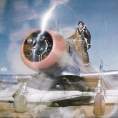

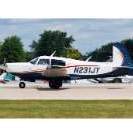



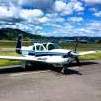




.thumb.jpeg.c529a3f64d70261154a6453d1ced6dc5.jpeg)

